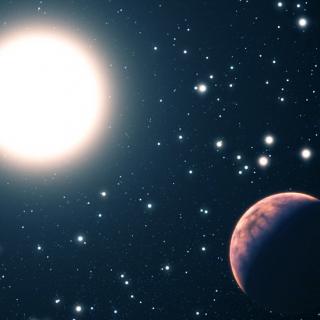Bibcode
Tabernero, H. M.; Montes, D.; González-Hernández, J. I.
Referencia bibliográfica
Astronomy and Astrophysics, Volume 547, id.A13 15pp.
Fecha de publicación:
11
2012
Revista
Número de citas
79
Número de citas referidas
69
Descripción
Stellar kinematic groups are kinematical coherent groups of stars that
might have a common origin. These groups are dispersed throughout the
Galaxy over time by the tidal effects of both Galactic rotation and disc
heating, although their chemical content remains unchanged. The aim of
chemical tagging is to establish that the abundances of every element in
the analysis are homogeneus among the members. We study the case of the
Hyades Supercluster to compile a reliable list of members (FGK stars)
based on our chemical tagging analysis. For a total of 61 stars from the
Hyades Supercluster, stellar atmospheric parameters (Teff,
log g, ξ, and [Fe/H]) are determined using our code called StePar,
which is based on the sensitivity to the stellar atmospheric parameters
of the iron EWs measured in the spectra. We derive the chemical
abundances of 20 elements and find that their [X/Fe] ratios are
consistent with Galactic abundance trends reported in previous studies.
The chemical tagging method is applied with a carefully developed
differential abundance analysis of each candidate member of the Hyades
Supercluster, using a well-known member of the Hyades cluster as a
reference (vB 153). We find that only 28 stars (26 dwarfs and 2 giants)
are members, i.e. that 46% of our candidates are members based on the
differential abundance analysis. This result confirms that the Hyades
Supercluster cannot originate solely from the Hyades cluster.
Based on observations made with the Mercator Telescope, operated on the
island of La Palma by the Flemish Community, at the Spanish Observatorio
del Roque de los Muchachos of the Instituto de Astrofísica de
Canarias.Figures A.1-A.6 are available in electronic form at http://www.aanda.orgTables A.1-A.9 and
the line list and EW measurements are only available at the CDS via
anonymous ftp to cdsarc.u-strasbg.fr (130.79.128.5) or via http://cdsarc.u-strasbg.fr/viz-bin/qcat?J/A+A/547/A13
Proyectos relacionados

Pruebas Observacionales de los Procesos de Nucleosíntesis en el Universo
Recientemente se han llevado a cabo varios análisis espectroscópicos de estrellas con planetas. Uno de los resultados más relevantes ha sido descubrir que las estrellas con planetas son en promedio más metálicas que las estrellas del mismo tipo espectral sin planetas conocidos (Santos, Israelian & Mayor 2001, A&A, 373, 1019; 2004, A&A, 415, 1153)
Garik
Israelian